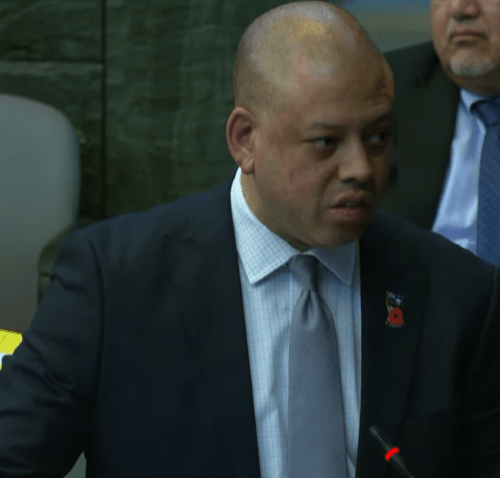(CNS): Governments were hyper-focused on “balance sheets and bank accounts” as they sought to grow Cayman’s economy over the last fifteen years and as a result they neglected the creation of grassroots wealth, Premier André Ebanks told the parliament, Thursday, in a statement ahead of the delivery of the 2026/27 budget address by his finance minister. The premier said that the community’s social metrics have suffered and the uncomfortable reality is that, “We have done relatively little to improve life for average Caymanians.”
Before promising that this first budget for the coalition was a pledge to put things right he listed the challenges the country faces that he wants to begin addressing.
“The growth we celebrated between 2009 and 2025 has left a social deficit in housing, access to healthcare, opportunity, infrastructure and community cohesion. Too many Caymanians have been left behind,” he told his parliamentary colleagues and the listening public.
“This government inherited an affordability crisis. The cost of living is beyond ordinary earnings. A housing shortage affecting lower to middle income Caymanians, even those with more than one income stream. Young Cayman locked out of entry level opportunities. Older Caymanians with woefully inadequate retirement income in their golden years… and outdated immigration and public service systems,” Ebanks added
The premier spoke of neglected infrastructure and environmental vulnerabilities as well as a weakened social cohesion and community resilience. But he said the NCFC government had been given the mandate to restore the Cayman community. “This budget…is our pledge to the people,” he said
Ebanks added that in this budget using an innovative and evidence-driven approach as well as enhanced compliance and collection efficiencies the government would begin to solve many of Cayman’s long-standing issues. Talking about fiscal prudence he said that did not mean not spending money on what was needed.
“Fiscal responsibility is about stewarding resources wisely so they yield the greatest long-term benefit,” he said. “For any good government, that means investing in your people, the most powerful asset any country possesses,” Ebanks stated about the $2.5billion his government plans to spend over the next two years.
To address the priorities Ebanks outlined increased spending on education, affordable housing and healthcare. Funding for education and workforce development will double, he said, from CI$1.4million to more than CI$3million by 2027. There will be an additional $4 million for primary education services for nursery and reception classes and secondary education will also see an additional $4million next year for curriculum improvements.
There will also be more money for government’s affordable housing initiatives and a significant increase in cash for Caymanains families building on their own property.
Ebanks also promised that spending on the environment is to be increased to develop “a world-class environmental protection framework,” including conservation efforts, environmental monitoring and reporting, compliance with local and international regulations, and oil spill contingency planning.
The allocation of resources to financial assistance is also being boosted with additional money to help local families in need as well as the disabled and elderly. He also revealed a significant increase in the funding government gives to the non-profit of Meals on Wheels from just CI$175,000 at present to half a million.
Ebanks said that this was the end of kicking problems down the road and his government would confront the inherited challenges with courage and evidence-based solutions and promised a shift away from growth at any cost to sustainable development.
Ebanks also said that government would advance the use of public-private-partnerships and other ways to finance our major projects. This may come back to haunt the coalition however as at the same time, in his own address Rolston Anglin spoke about increasing the threshold value from $10million to $25million before PPP projects would require independent oversight. But PPPs are now notorious for overspending, offering poor value for money for the public purse and a vulnerability to corruption at all levels.
But Ebanks urged the public to hold his government accountable as it commits to providing the people with evidence-based targets and evaluation frameworks, quarterly public reports on financial and performance outcomes, oversight by parliament, civil society and independent auditors. “So the people of the Cayman Islands expect results, insist on them,” he said before asking in return for there support and participation in, “this courageous transformation of our country.”
He added that real change requires discipline, patience, and a shared effort to choose transformation.
See the premier’s full address below.














